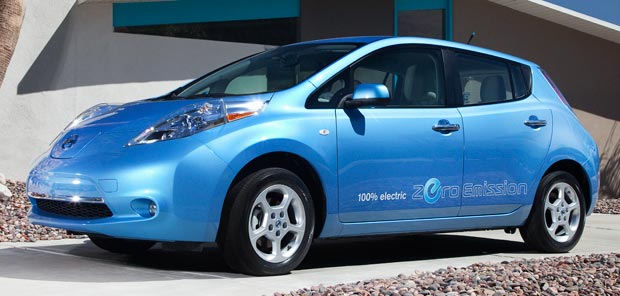The all-electric car is finally back, and it’s a welcome addition to the market
CASEY WILLIAMS | Auto Reviewer crwauto@aol.com
Fourteen years ago, my college roommate and I departed our fraternity in Flint, Mich., to review the GM EV1 electric car for our school newspaper. It was exciting to drive the car of the future. Despite all of the nonsense you’ve heard from actors and comedians, the EV1 was a decent car that GM put significant effort into producing. It was eerily quiet, nearly as fast as a Z28 Camaro, and looked as smooth as a gayby.
It also cost the price of a new Mercedes and had a 60-mile range. In the end, as my roommate calculated driving back to Flint in my Geo, the math didn’t add up.
 Times have changed. Now, a new generation of electrical engineers is re-working the formulas. And the math might be there.
Times have changed. Now, a new generation of electrical engineers is re-working the formulas. And the math might be there.
In person, the car looks close in size to a Toyota Prius or Honda Insight, but unlike a hybrid, it runs solely on electrons. An ultra-aero exterior improves range and reduces wind noise. Headlamps are placed to direct air over the body and around the mirrors. An underbelly pan and rear spoiler help the air depart cleanly. LED headlamps, thin vertical taillights, chrome door handles and 16-in. alloy wheels are all glam.
Leaf’s next-decade cabin takes inspiration from the Prius and Honda Civic, with the entirely different purpose of efficiently moving a car without a gasoline engine. There’s no need for a tachometer, engine temperature gauge or oil pressure monitor.
More relevant, the NAV system shows a circumference of drivable range at any given time while a monitor shows power usage from the climate control, electric motor and other systems so drivers can intelligently manage their energy usage. Owners can schedule battery charging for non-peak hours (even from their iPhone), turn on A/C remotely, and talk on their Bluetooth-enabled hands-free phone.
Driving the Leaf confirms this is no ordinary auto. Pushing the starter button doesn’t so much start the car as enable it to move. Engage “D” with the center-positioned “joy pod” by jerking down. Step on the “throttle” and the car whirs away without fuss. It is so quiet that electric motors for the windshield wipers and climate control were upgraded so passengers wouldn’t hear them in the absence of engine noise.
Our route took us through city streets before jetting onto the freeway and up to an easy cruising speed of 80 MPH. The flat torque curve inherent to electric motors is like a turbine at take-off — there’s no shifting gears, just smooth constant thrust. A low center of gravity, thanks to the battery placement, lets the car sashay though Tennessee farm country like an ice skating pixie.
Regenerative brakes capture energy during deceleration and direct it back to the batteries, increasing the car’s range. Nissan promises a useful driving distance of 100 miles per charge and a top speed above 90 MPH. An eco mode conserves energy by making the throttle less sensitive and the regenerative brakes more aggressive.
According to Nissan, 90 percent of Americans average fewer than 100 miles a day driving, and nearly three-quarters drive less than 50 miles per day. Charging takes 20 hours on 110V home plugs, 8 hours on a 220V hard-wired outlet and less than 30 minutes on a commercial charging station, which utility companies are installing.
Safety was paramount in the Leaf’s design. It comes with a full array of airbags and meets all federal crash standards. The battery pack is placed in the center of the car, under the floor, to protect it in an accident. The pack was also subjected to full water immersion, deep freezing, and extreme hot temperatures.
Compared to the EV1, the Leaf goes further, holds more people and costs significantly less. Accounting for a $7,500 federal tax credit, prices start at $25,280. States and municipalities offer up to $6,000 each in tax breaks. (In some parts of California, the total credits reduce the Leaf’s price to less than $13,000!)
Many people will like the new math. I would not adopt the Leaf as my only car, but it would do everything I need 99 percent of the time. A decade and a half later, I’m charged up again for the future of electric cars.
This article appeared in the Dallas Voice print edition December 3, 2010.












EVs run on coal and natural gas. That’s dirtier than running on gasoline.